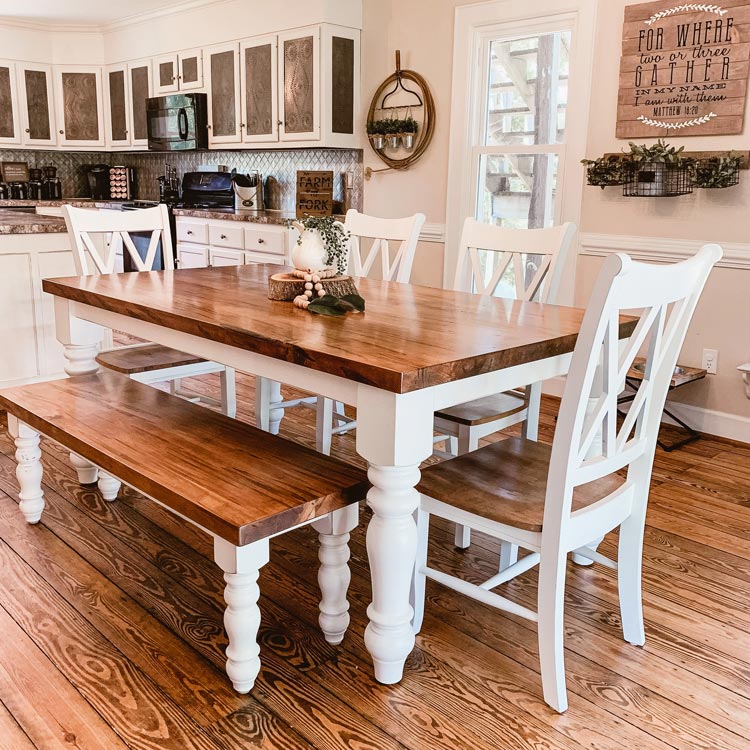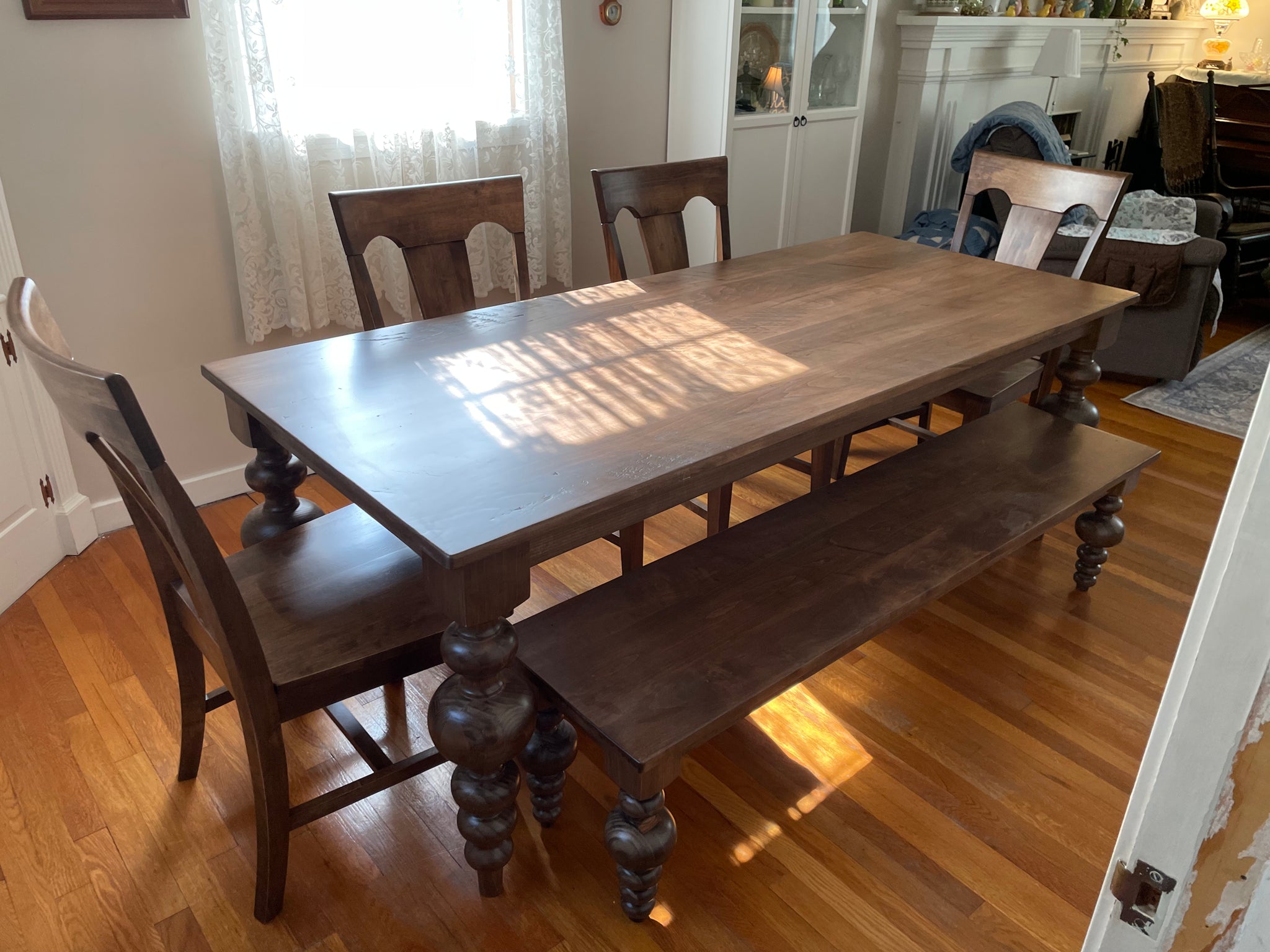Just How to Choose the Perfect Dining Area Table Legs for Your Home Décor
Choosing the optimal dining room table legs is a nuanced process that calls for mindful factor to consider of numerous aspects, including your area constraints, aesthetic choices, and functional demands. The interaction in between dimensions, designs, and products can considerably influence the ambiance of your eating area, making it vital to approach this decision carefully.
Assess Your Dining Space
Assessing your eating area is essential for picking the right table legs that complement both aesthetics and performance. Begin by measuring the measurements of your dining location, including ceiling elevation, flooring room, and distance to various other furniture. This details will assist figure out the suitable dimension and height of your table, which directly influences the selection of table legs.
Next, take into consideration the style and design of your eating area. For example, an open-concept layout may gain from table legs that offer aesthetic lightness, such as slender steel or acrylic choices. Conversely, a more traditional setting might ask for durable wood legs that provide a feeling of durability.
Evaluate the existing color scheme and products in your dining location. Balancing the table legs with these components produces a natural look that enhances the overall style.
Eventually, a complete evaluation of your dining space will direct you in making an educated decision, making certain that your table legs not only enhance the aesthetic allure yet likewise offer useful objectives.
Consider Your Style Preferences
When selecting dining room table legs, it is crucial to reflect on your personal style choices, as they substantially influence the general aesthetic of your dining area. Your selection of table legs can either enhance or comparison with existing decor, making it critical to straighten them with your recommended indoor layout style.
If your home leans in the direction of a contemporary visual, consider smooth metal or minimal wood legs that supply a tidy, minimalist look. For a more typical technique, ornate wooden legs with detailed makings can add a touch of style and class. Industrial designs profit from durable, raw products such as recovered timber and metal mixes, mirroring a tough charm.
Additionally, farmhouse and rustic designs usually prefer sturdy, chunky legs that evoke a sense of heat and convenience. Conversely, if your décor is eclectic, you might choose unusual forms or a mix of materials to create aesthetic passion.

Evaluate Product Options
The choice of product for eating room table legs plays a pivotal role in both sturdiness and aesthetic allure. Common materials consist of wood, steel, and composite alternatives, each offering unique attributes that can affect the general appearance and durability of your table.
Wood is a classic option, understood for its warmth and adaptability. Hardwoods like oak and walnut offer extraordinary toughness and can be completed in various discolorations to match any type of design. Softwoods like want are a lot more vulnerable to scrapes and dents, making them less ideal for high-traffic locations.
Steel legs, usually crafted from steel or aluminum, emanate modernity and industrial appeal. They are highly resilient and resistant to wear, making them ideal for family members with youngsters or frequent gatherings (dining room table legs). In addition, metal can this be ended up in various colors, enhancing the modification opportunities
Composite products, such as MDF or laminate, offer cost and varied layouts. While generally much less resilient than strong timber or steel, they can still offer a stylish look and are usually easy to maintain.
Inevitably, the material you choose need to line up with your lifestyle, visual preferences, and the degree of use your table will certainly experience.
Determine Elevation and Size
Selecting the ideal height and dimension for your dining-room table is important for both capability and comfort. The standard height for eating tables usually varies from 28 to 30 inches, allowing enough legroom for many people when seated. It is vital to consider the measurements of your eating area and the types of chairs you prepare to make use of.

Furthermore, consider the proportions of your dining-room. A larger table in a large location can produce a grand setting, while a smaller sized table functions well in even more intimate settings. Inevitably, the right elevation and size will balance with your total decor and enhance the dining experience for you and your guests.
Explore Customization Possibilities

In addition, the design of the legs can check it out be customized to fit numerous styles, such as rustic, modern-day, or commercial. For instance, conical legs can evoke a mid-century contemporary feel, while beefy, block-style legs may reverberate with standard or farmhouse design.
House owners can also discover color coatings, from natural timber discolorations to repaint, allowing them to match or comparison with the tabletop and bordering design.
Moreover, leg height can be readjusted to suit specific seating setups or individual preferences, enhancing both comfort and performance.
Lastly, unique embellishments, such as makings or ornamental braces, can better individualize the table legs, making the eating experience not just a dish but a statement piece in the home. By considering these modification options, homeowners can produce a dining space table that absolutely shows their uniqueness.
Verdict
Selecting the perfect eating room table legs needs mindful consideration of various aspects, consisting of the measurements of the eating room, style choices, product resilience, and preferred elevation. Modification alternatives even more improve the capability to accomplish a cohesive visual that enhances the total decor. By systematically assessing these elements, property owners can make sure that the selected table legs not only satisfy practical demands however likewise contribute positively to the dining experience and ambiance of the home.
Selecting the perfect eating space table legs is a nuanced process that needs careful consideration of various components, including your room constraints, aesthetic choices, and sensible demands.Analyzing your eating area is important for selecting the right table legs that complement both aesthetic appeals and functionality.When determining size, measure the location where the table will certainly be placed to ensure it fits conveniently, enabling for at least 36 inches of clearance around the table for easy movement. A bigger table in a large area can develop a grand setting, while a smaller table works well in more intimate setups.Choosing the optimal dining area table legs needs careful factor to consider of different factors, consisting of the measurements of the dining room, style preferences, product resilience, and desired elevation.